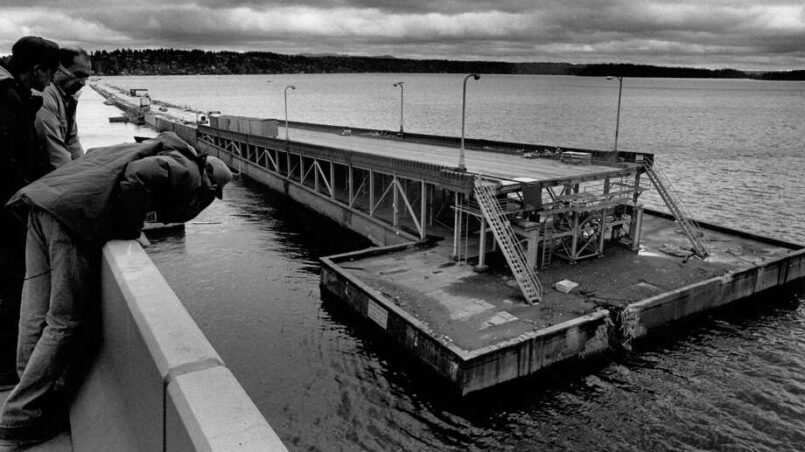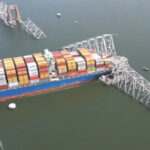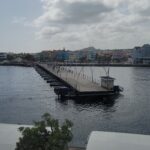Evening rush hour was well underway on the night of December 15, 1967 in Point Pleasant, West Virginia. The holiday shopping season was in full swing and this combined with the normal commuter traffic made for some busy roads. The Silver Bridge, the only crossing of the Ohio River for miles, was no exception. Residents of Point Pleasant and nearby Gallipolis, Ohio relied upon the bridge for their daily commutes, as did truckers and other vehicles using Highway 35 to cross the river.
But little did they know that one of the many eyebar links that supported the bridge was about to give way in dramatic fashion.
The chains that supported the bridge were made up of two parallel eyebar links, each one being 2 inches thick. The individual links were connected together by pins, much like a bicycle chain. A single link ran between suspenders or support truss connections. At each connection pin, the eyebars were sandwiched together with the hanger assemblies.

Steel used to make the eyebars was unusually strong for the time, about 50,000 pounds per square inch working stress, resulting in fewer actual links than other similar bridges. This made the links very strong, so fewer of them were needed – compromising the redundancy of each chain.
It all started with a crack about 0.1 inches deep in eyebar 330, the first eyebar below the top of the Ohio tower on the north chain. The crack initiated due to fretting wear of the eyebar against the link pin. After 40 years in service, the daily minute rotations of the eyebar relative to the pin had caused a flaw to open in the link. Once this crack had opened, water and oxygen mixed to begin transforming the eyebar steel into iron oxide – known commonly as rust. Gradually over time, this corrosion weakened the eyebar to the point where it could no longer support the load upon it.

On December 15, eyebar 330 failed when the remaining section could not support the load on it. When 330 fractured, full load was redistributed to the parallel eyebar, causing it to fail from overstress. Once this happened, complete collapse was inevitable.
The towers were designed to rock under load. Their ability to stand up was dependent of the suspension chains. Once the chains broke, the towers themselves fell down. This gave investigators their biggest clue to what caused the collapse.
In all, 46 perished in the collapse. The bodies of two people were never recovered. The collapse inspired the Federal-Aid Highway Act of 1968 which established the National Bridge Inventory (NBI) and the National Bridge Inspection Standards (NBIS). Every bridge in the United States that carries a public road must be inspected according to the NBIS and must be listed in the NBI.
Still, after almost 60 years after the collapse of the Silver Bridge and establishment of the NBIS, bridges still fall down. In this edition of TheBridgeGuy, we’ll answer the question – why do bridges (sometimes) fall down?
Natural Disasters
Mother Nature can wreak havoc on bridges from time to time. The forces of nature can often times be more detrimental than anything that humans can devise. Engineers have learned from past failures and the bridges built today are much more resilient to nature than bridges of the past.
Windstorms still devastate human civilization from time to time. Hurricanes and tornadoes in the United States are just two examples. The collapse of the Tacoma Narrows Bridge in 1940 led to new appreciation for the power of wind. It advanced our understanding of wind beyond just a pressure load and forced us to consider such phenomena as vortex shedding, aeroelastic flutter and unstable oscillations along with other aerodynamic effects.
Earthquakes control the design of most bridge designs today, but prior to the late 1970’s, seismic loading wasn’t given much thought – if it was considered at all. The Loma Prieta earthquake in 1989 and the Northridge earthquake in 1994 were considered watershed events in the development of seismic policy in the United States. Earthquakes in Japan and other areas around the Ring of Fire have also assisted with our understanding of seismic behavior of buildings and bridges today.
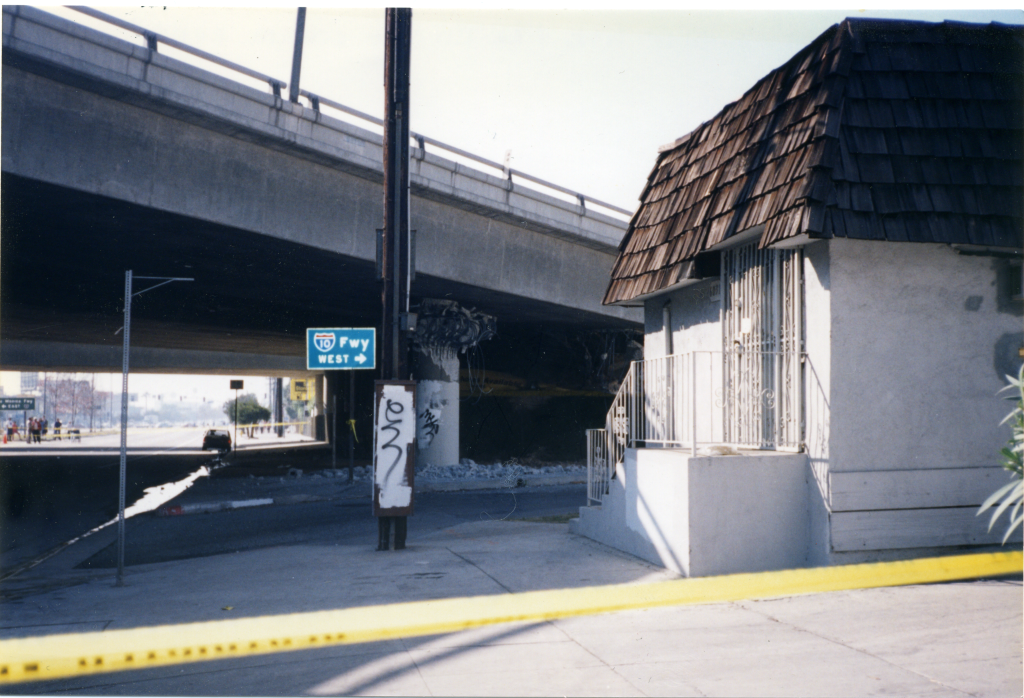
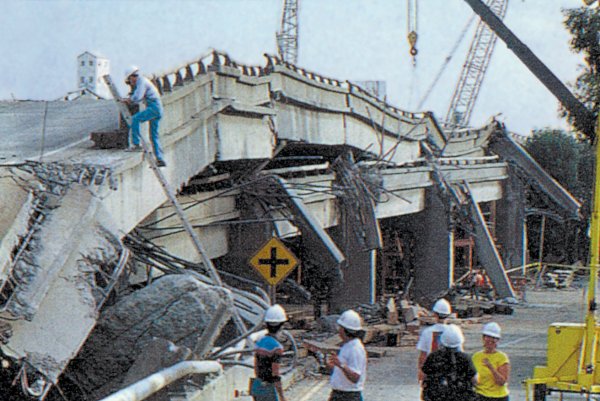
Still, earthquake engineering is not an exact science. There is no known way to accurately predict when an earthquake will occur, unlike other natural phenomena. Also there is some disagreement over the size of a design earthquake that should be considered.
Many codes use statistics to describe an earthquake. AASHTO often refers to an earthquake with a 7% chance of exceedance in 75 years, which in other words means an earthquake that almost certainly will happen sometime in a 1,000 year timeframe. But other codes use 2,500 years, others consider a 500 year event. In reality, engineers can design for anything. But can we afford to design all bridges for a devastating event that has a 7% chance of occurring in the design life of that bridge?

Landslides or mudslides commonly take out bridges and other structures. When Mount St. Helens erupted in May 1980, the lahar generated laid waste to many bridges in its path. The eruption caused about $1.1 Billion in property damage, including devastation of many state highway bridges. In May 2023, a mudslide took out a bridge on State Route 504 in Cowlitz County Washington. Ironically, this bridge allowed access to the Johnson Ridge Observatory that opened in the wake of the eruption. Much of the SR 504 highway was rebuilt after the eruption. Just another sign that Mother Nature is a force to be reckoned with.
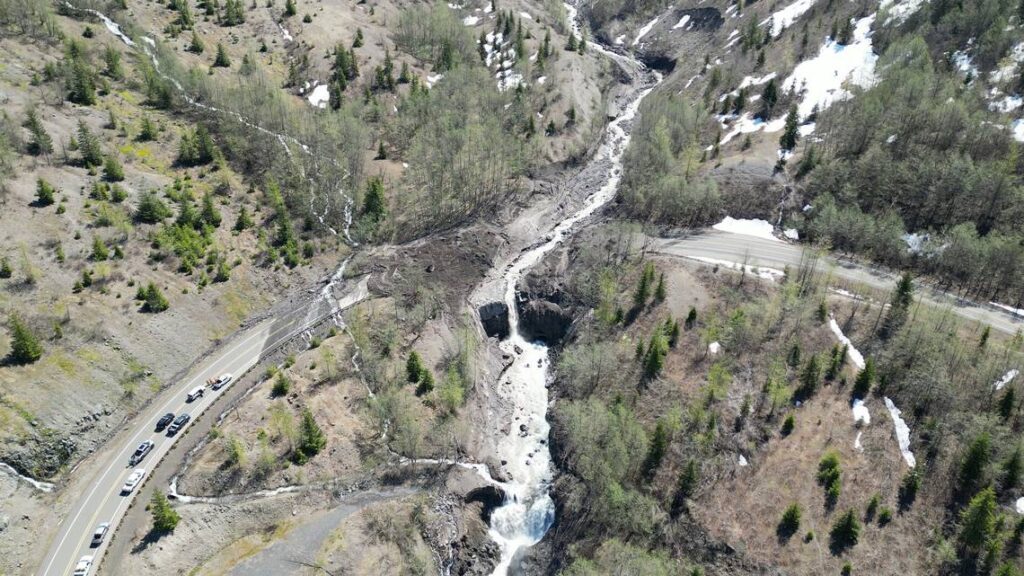
Collision and Allision
Bridge strikes are more common than one might imagine, see You Could Learn a lot From a Dummy – Stop Hitting our Bridges! and The ‘Impact’ of the Francis Scott Key Bridge Collapse. But not all strikes result in a bridge falling down.
At 7:00 pm on May 23, 2013, a truck hauling an oversized load from Canada to Vancouver Washington struck the portal and several sway frames on the northernmost span of the Skagit River Bridge near Mount Vernon Washington. The truck successfully crossed the bridge before the northern span collapsed. Two other vehicles were sent into the river but all three of the passengers were rescued without serious injury.
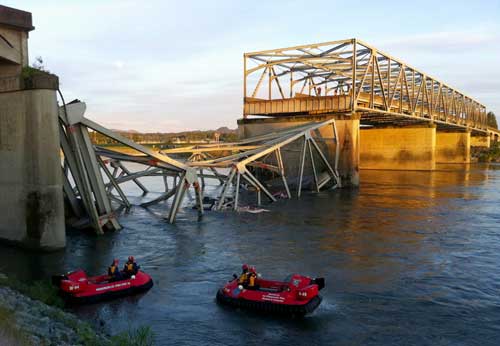
Skagit River is a series of simple through trusses that carry Interstate 5 across the Skagit River. Being the main north-south freight route through Western Washington, the bridge sees a fair amount of oversized truck traffic. The trucking company had received permits from the State to use I-5 and was escorted by a pilot car.
Many of the truss bridges of this era used architectural curves on the portal and sway frames where these members tied in to the vertical members. These curved frames reduce vertical clearance near the edge of the traveled way, especially the outer lanes. Unfortunately the truck was using the right hand lane and the distracted pilot car driver failed to alert the truck driver to the danger ahead or the relative safety of the next inside lane.
A temporary Acrow bridge was erected to reopen I-5 temporarily until a permanent span could be designed and built. In mid-September, only 4 months after the collapse, the new permanent span was rolled into place at a cost of almost $7 Million.
So why did this bridge fall down? Most trusses are inherently non-redundant structures. This means, if you were to remove one critical member from the bridge’s primary load path, the bridge would become unstable and collapse. There is not enough other members to redistribute load to. The NBIS used to refer to such structures as fracture critical but this has largely been superseded by the term non-redundant.
In the past, trusses were useful for crossing small to medium distances. Prestressed concrete had yet to be invented and trusses also made economical use of the steel grades available. Labor was cheaper in those days, and unskilled labor could be implemented for installing rivets.
Today, new trusses are rare. Girder spans can routinely reach span lengths that used to only be in truss territory. For longer spans, segmental and cable supported bridges can be used instead of trusses. These bridges have more inherent redundancy than trusses, making them less susceptible to collapse from vehicle impacts.
Deterioration
A bridge, if properly maintained, could last indefinitely. This means painting steel bridges at the first sign of paint deterioration. This means sealing cracks in concrete when they are first noticed. Stay on top of maintenance and all will be well.
However, despite our best efforts, the United States has more bridges than we have money to keep them in good repair. Decision makers must allocate resources to the greatest needs, meaning some bridges get neglected. This neglect, if left for too long, can permanently compromise the service life of a bridge. Eventually, the cost to rehabilitate becomes more than the cost to replace.
Luckily, with the NBI and NBIS, collapse due to deterioration is extremely rare. Bridges are inspected regularly to look for defects and correct them before collapse can occur. For severe issues, closing a bridge before collapse out of an abundance of caution is the smart move.
Even though collapse is unlikely in these cases, we still have too many bridges in the US in dire need of attention – either regular maintenance, rehabilitation or replacement.
At 11:36am on August 14, 2018, the Ponte Morandi in Genoa Italy collapsed during a rainstorm, killing 43 people. Riccardo Morandi designed the bridge using prestressed concrete throughout, however the concrete is only prestressed to about 1,500 pounds per square inch on average which is barely beyond the modulus of rupture of the concrete.
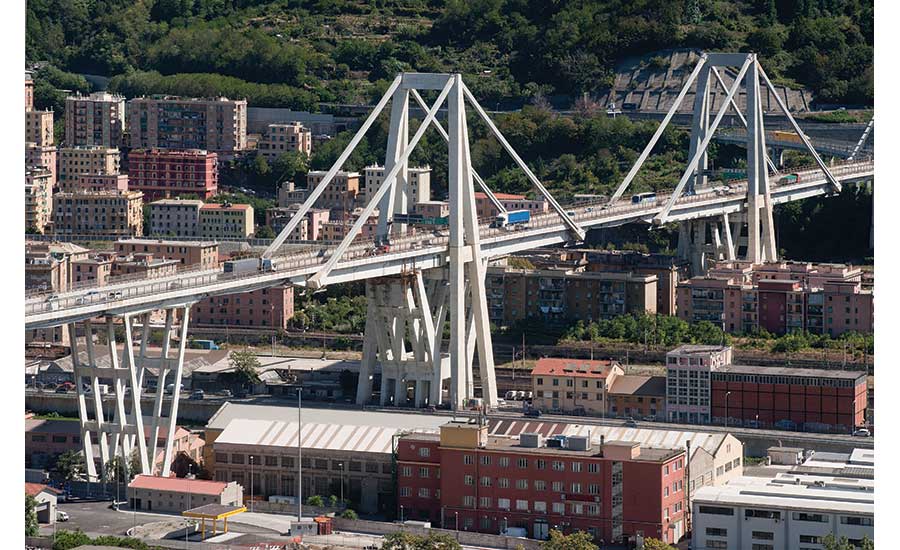
Morandi himself predicted that the bridge would need significant maintenance efforts to ensure a long life. Investigations in the 1990’s found heavy oxidation on the steel used in the bridge, but only a few of the stays were ever strengthened.
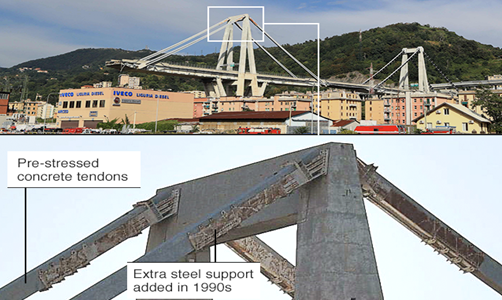
The stay design has been the topic of much debate. The concrete encasement around the steel cables was likely intended by Morandi to protect them from corrosion, much like grout is intended to protect internal post-tensioning. However, since the stays were never fully prestressed to control tensile stresses, the concrete likely began to crack due to creep and shrinkage almost immediately.
The collapse still remains under investigation.
Human Error
To err is human, just not too often! By far, the majority of bridge collapses that have occurred are the result of human error. These errors can be design errors that happened before the bridge was built, but they can also be construction errors. This is why quality control procedures are in place in the engineering profession, to reduce the chance of a catastrophic incident.
At 1:47pm on March 15, 2018, the 175 foot main span of a pedestrian bridge under construction on the campus of Florida International University collapsed across Southwest 8th Street, killing six people.
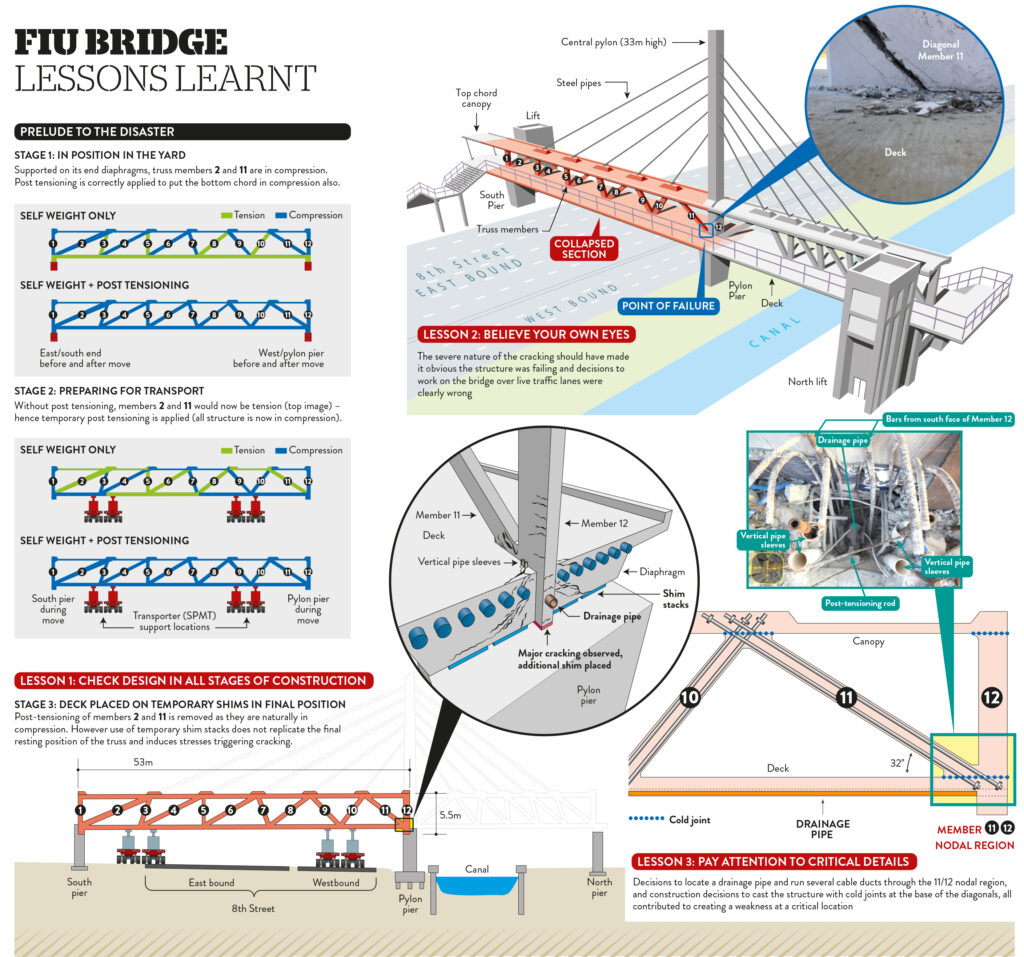
In its report on the collapse, the NTSB stated that “load and capacity calculation errors made by FIGG Bridge Engineers Inc., are the probable cause of the fatal…collapse in Miami.” Prior to the collapse, FIGG conceded that one of the nodes on the truss was not adequate for the loading and that remedial measures would need to be implemented. However, at no time was 8th street closed or temporary shoring implemented to help reduce load on the node in question. Cracking was noticed by the contractor and brought to the attention of the engineer. FIGG did not know the reason for the cracks but still expressed no concern over them.
At 6:05pm on August 1, 2007, rush hour traffic was creeping slowly across the 4 open lanes of the I-35W Bridge in Minneapolis Minnesota when the entire main span deck truss collapsed. The collapse sent 111 vehicles and 18 construction workers plummeting 115 feet into the river below. Thirteen people were killed in the collapse and another 145 were seriously injured.
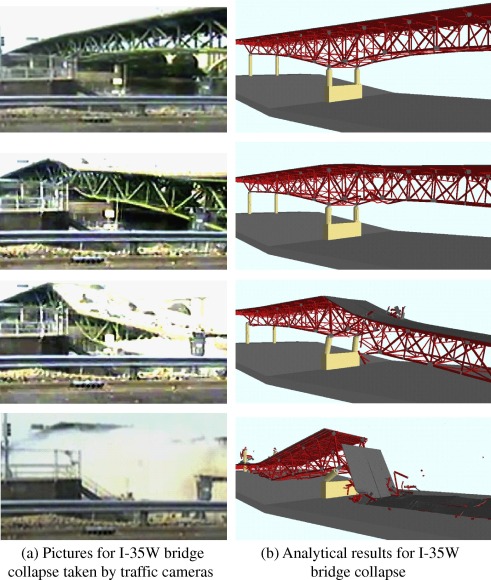
Contractors were working to resurface the bridge and perform expansion joint work on the bridge. The bridge carries Interstate 35 traffic across the Mississippi River. In addition to the four fully loaded traffic lanes on the bridge, the contractor also had 287 tons of construction supplies on the deck.
In their report, the NTSB listed undersized gusset plates as the cause of the collapse. It was unclear if this was a design error (the specification of ½” thick gusset plates) or a construction error. In a 2003 inspection of the bridge, bowing gusset plates were noted which suggests they were being overloaded.
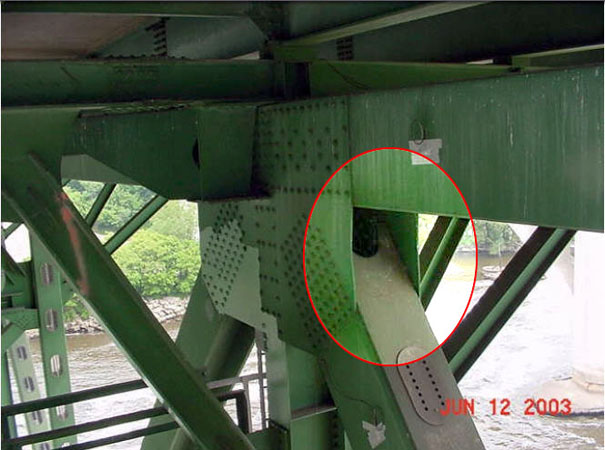
In addition to the gusset plates being undersized in the original design, 2 inches of additional concrete had been added to the bridge deck over its life. This accounted for an increase in dead load of approximately 20%. Add to that the 287 tons of construction material that was piled over the weakest point on the bridge and you have a recipe for disaster.
While it may be easy to blame the original designer for undersized gusset plates, other human errs occurred over the years which allowed the bridge to be overloaded to the point of collapse. Any time a bridge is to be modified, it is imperative that the engineer evaluate the entire structure to ensure it can take the extra load.
In the aftermath of the collapse and investigation, the Federal Highway Administration (FHWA) instructed all bridge owners to perform inspections of similar bridge types and perform load ratings on their gusset plates.
Load rating is performed on all bridges to determine their ability to carry live load. It is also used to issue permits for overload vehicles. The formula for the rating factor is capacity minus dead load, divided by live load. Therefore, it is a ratio of the remaining capacity when you remove dead load compared to the live load. Rating factors are computed for each superstructure member on a bridge and the lowest factors are summarized.
Prior to the I-35W collapse, gusset plates were not regularly load rated. It was assumed that the gusset plate (or any connection) would be designed to be stronger than the supporting members. I-35W proved that assumption to be erroneous. New procedures were quickly implemented to help owners rate gusset plates, one method being the Triage method. This method looks at tension, block shear and buckling as potential failure mechanisms for gusset plates.
Thomas Andrews (Victor Garber) said it well in Titanic, “She’s made of iron, sir! I assure you, she can [sink] and she will, it is a mathematical certainty.” Despite our very best efforts, bridges will (sometimes) fall down just as ships will (sometimes) sink and airplanes will (sometimes) crash.
Views: 805